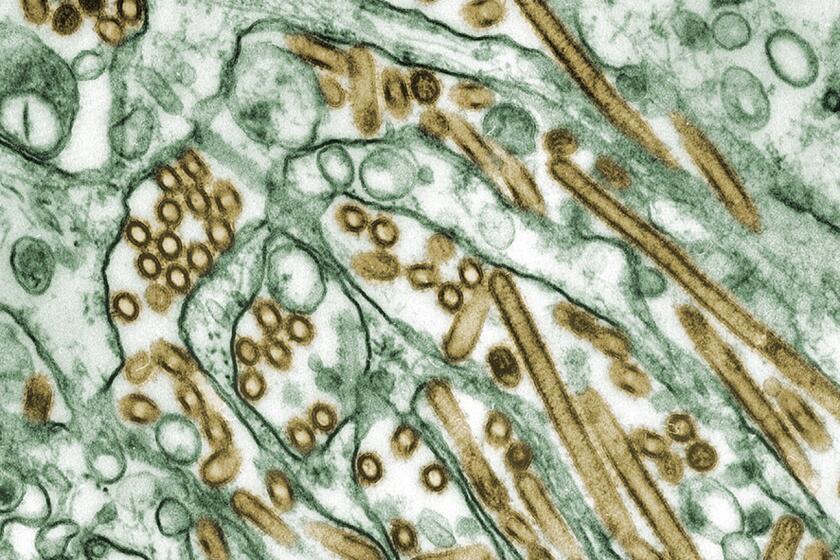Illegal Catches May Threaten Salmon Effort : Wildlife protection: Wardens are issuing warnings and citations in a bid to ensure the success of a program to reintroduce the fish into the waters off Ventura County.
State Fish and Game Department wardens are making daily patrols at the Ventura Pier, looking to cite fishermen who illegally snag baby salmon.
Less than three weeks ago the United Anglers of California Research Institution released 40,000 young Chinook salmon about a half mile off Channel Islands Harbor in Oxnard. The goal of the $20,000 program is to reintroduce salmon into the waters off Ventura County.
But heavy fishing of the baby salmon, some of which apparently were carried to the pier by ocean currents, could jeopardize the effort, state officials say.
“Any loss is a shame because the fish have a potential for reaching a large size that will provide a much better fishing experience,” said Capt. Roger Reese, manager of wildlife protection for the fish and game district that covers Ventura, Santa Barbara and northern Los Angeles counties.
The salmon, which grow to as much as 45 pounds in four or five years, are distinctive for their adipose fin, a fleshy organ near the tail, and black spots on their backs, Reese said. They resemble a freshwater trout.
Wardens estimate that more than 100 of the six-inch-long fish have been caught at the Ventura Pier. The wardens said they are warning or issuing citations to fishermen who have baby salmon, which by law must be at least 20 inches long. Penalties, which are assessed in Municipal Court, can be as much as $1,000 in fines, six months in jail, or both.
Danny Leal, a Ventura oil field worker who was cited last week on charges of having an undersized catch, said it was the first time he was ever unlucky enough to catch a salmon.
“I didn’t even know what it was,” he told Warden Steven Riske as the salmon was confiscated.
Ray Wilson, another Ventura Pier fisherman, said it’s hard to avoid running afoul of the law. “You catch them every five minutes,” he complained as he sat by his pole on the pier last week. “The things steal your bait.”
Hooking a salmon can kill the young fish even if it is thrown back immediately, said Steven Rebuck, a commercial fisherman and executive director of the Ocean Sanctuary Coalition of San Luis Obispo County.
“They have a very weak mouth and their gills are very sensitive to that kind of damage,” he said. “Catching a salmon with a hook can be enough to kill them.”
Fish and game officials say the 40,000 fish probably dispersed into smaller schools that travel past the pier. Reese could not say why the salmon hang around the pier or when they might depart.
“But we’re hoping they’ll move along soon,” he said.
If the fish had been released two miles farther out to sea, the problem might have been avoided, he said. A release at sea would also have reduced the number of salmon lost to other fish and to sea birds and marine mammals, Reese said.
United Anglers sponsored the program with scientific and financial assistance from the state agency, using money collected in fines in Ventura County.
The organization bought the fertilized eggs from a Seattle company. The Fish and Game Department kept them at its hatchery near Yountville in Northern California until they were 2 1/2 inches long. They were transferred to offshore pens at Oxnard on June 2 and kept there until they grew large enough to be released.
Salmon were once naturally plentiful in the area, Reese said. Before the Ventura and Santa Clara rivers were dammed and polluted with pesticides and treated sewage water, salmon swam up the rivers to lay eggs, he said.
“Their spawning grounds in rivers have been lost to pollution, water diversion projects, ground-water pumping and a myriad of things,” he said. “We have degraded and lost the habitat, and without habitat, they can’t spawn.”
It is unlikely that the freshwater spawning fish could use Ventura County rivers now because they contain little or no water in the fall, when the salmon begin their trek from the sea and into rivers and streams, said Robert Rawstron, chief of the Fish and Game Department’s Inland Fisheries Division.
He said, however, that if the pen-bred fish reach maturity, it is remotely possible that they could swim to the Sacramento River where they could lay eggs.
Rawstron said it is more likely that the fish released in Ventura will not reproduce but will provide catch for commercial and sport fishermen along the coast as far north as Washington for the next three to five years.
“They will go where the temperature is right and where the food is,” Rawstron said.
If United Anglers is successful in buying another 60,000 eggs for release next year, those fish may be magnetically tagged so the Fish and Game Department can track them, said James Donlon, a United Anglers member who also serves on the Ventura County Fish and Game Commission, which advises county supervisors on wildlife matters.
Donlon said the organization may release the young salmon farther out to sea or when weaker currents prevail to prevent the fish from hovering around piers.
More to Read
Start your day right
Sign up for Essential California for news, features and recommendations from the L.A. Times and beyond in your inbox six days a week.
You may occasionally receive promotional content from the Los Angeles Times.






